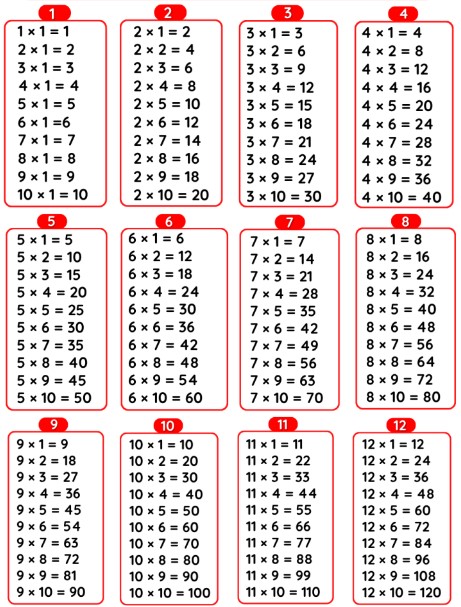Understanding an arithmetic operation is a crucial skill for students to develop strong mathematical foundations. Mastery of tables provides a solid framework for tackling more advanced mathematical concepts. So in this comprehensive guide, you will delve into the world of multiplication, exploring strategies, tips, and tricks to help students master multiplication tables. Whether you are a learner, a student, a parent, or an educator, this guide will assist you with the important tools to establish your understanding of this arithmetic operation.
Table of Contents
The Importance of Tables
It serves as the building block for a range of mathematical operations. They are essential in everyday life, from calculating the cost of groceries to solving complex mathematical problems. By mastering this arithmetic operation, students develop a strong number sense and improve their overall mathematical abilities.
Memorization Techniques
Memorizing can seem daunting at first, but with the proper techniques, it can become an enjoyable and efficient process. So, here are some strategies to help students memorize effectively:
- Chunking Method: Divide them into smaller, manageable groups, and focus on mastering one group at a time before moving on to the next. This approach reduces the cognitive load and makes memorization more manageable.
- Visualization: Encourage students to visualize this arithmetic method as repeated addition. For example, to solve 4 x 3, students can imagine four groups of three objects each. Visualization aids in understanding the concept and reinforces memory retention.
- Mnemonics: Create memorable phrases or songs that associate numbers with specific facts. For instance, “8 times 8 is sixty-four, knock at the doctor’s door” helps us remember 8 x 8 = 64. Mnemonics can be a fun and effective way to remember the facts.
Patterns in Tables
Recognizing patterns can significantly simplify the process of memorization. Meanwhile, several patterns emerge within the tables, such as:
- Commutative Property: The product of any two numbers remains the same, regardless of the order of learning this technique. For example, 3 x 4 is equal to 4 x 3, and identifying this pattern reduces the number of facts to memorize.
- Doubling and Halving: Multiplying a number by 2 is equivalent to doubling that number, while dividing a number by 2 is equivalent to halving it. This pattern can be conducive when dealing with even numbers.
- Zero Property: Any number multiplied by zero results in zero, and this property is consistent across all numbers.
Building Fluency
Fluency involves not only memorizing the facts but also being able to recall them quickly and accurately. So, here are some strategies to build fluency:
- Daily Practice: Dedicate a few minutes each day to practice the facts with a multiplication chart. Consistent practice reinforces memory retention and helps build speed and accuracy.
- Flashcards and Games: Utilize flashcards or online games to make practice sessions interactive and engaging. These resources provide an element of fun while reinforcing these arithmetic operation skills.
- Real-World Applications: Encourage students to apply skills to real-life scenarios. For example, calculating the area of a rectangle requires multiplication. Integrating real-world applications helps students see the relevance and importance of this arithmetic operation in their daily lives.
Mastering Multiplication tables is an essential step toward building a solid mathematical foundation. By utilizing effective memorization techniques, recognizing patterns, and practicing regularly, students can develop arithmetic fluency. Additionally, online resources provide interactive and engaging platforms to reinforce skills. Remember, mastering is not just about rote memorization; it’s about understanding the concepts and applying them to real-world scenarios. With dedication and consistent practice, anyone can become an arithmetic master.

